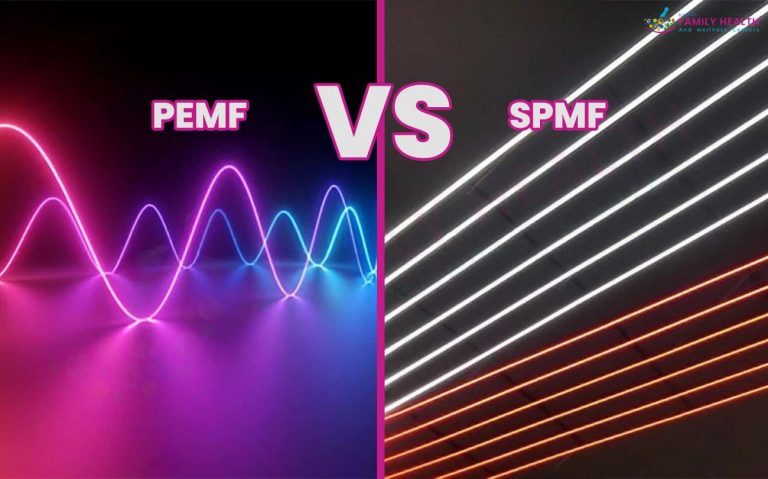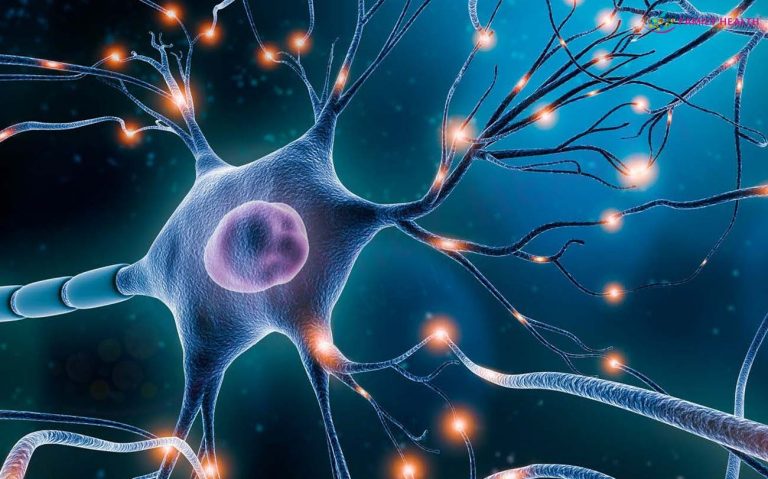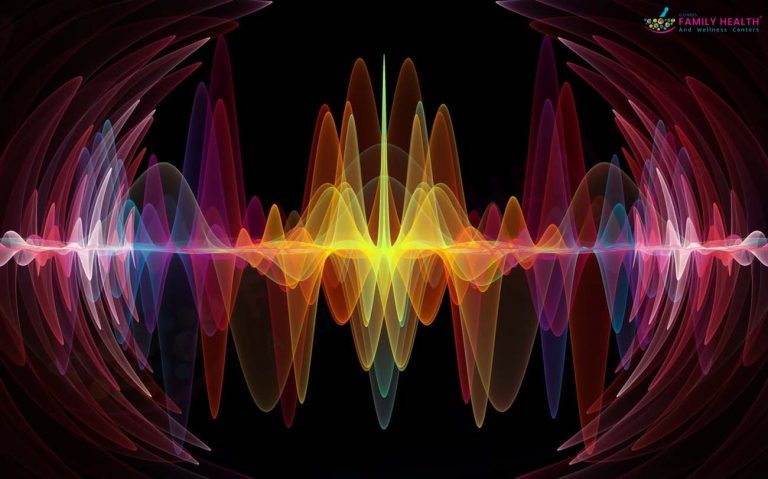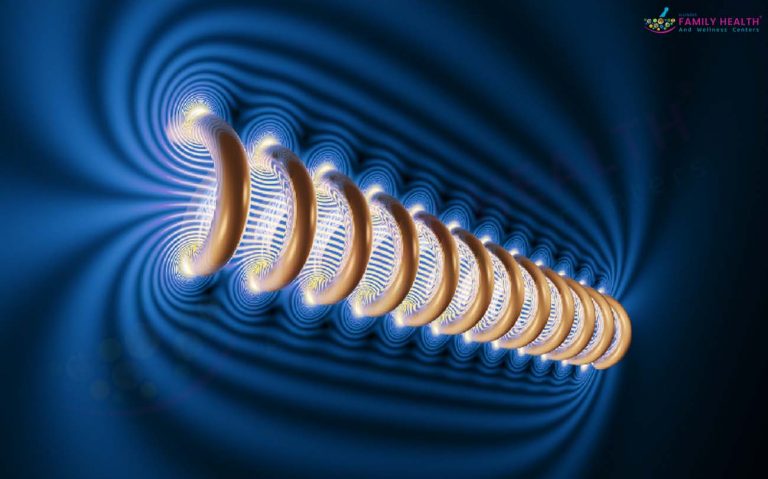Difference between PEMF and SPMF
Home >PEMF Therapy >Difference between PEMF and SPMF
In the bustling marketplace of wellness solutions, pulsed electromagnetic fields (PEMF) and static pulsed magnetic fields (SPMF) have emerged as alluring whispers of healing. Both utilize the enigmatic language of electromagnetism, beckoning with promises of pain relief and vibrant cellular rejuvenation. However, beneath their shared cloak of magnetic influence, distinct narratives unfold, painting contrasting pictures of efficacy and versatility. Today, we embark on a journey to dissect these subtle differences, ultimately revealing why PEMF reigns supreme as the maestro of holistic well-being.


The Pulse of the Symphony: A Dance with Cellular Resonance
The first and most captivating distinction lies in the very delivery of the electromagnetic message. PEMF operates like a rhythmic poet, sending bursts of energy in timed pulses. This pulsating melody resonates with the body’s natural bioelectrical symphony, gently nudging cellular activity towards a harmonious crescendo of healing, as elegantly demonstrated in the Journal of Cellular Physiology. In stark contrast, SPMF acts as a monotonous droner, emitting an uninterrupted low-frequency hum. This static note of SPMF lacks the nuanced choreography of PEMF, limiting its reach and impact, as suggested by a review in the International Journal of Clinical Practice.
The Orchestra of Frequencies: Each Note Targeted, Each Melody a Cure
Frequency, the language of electromagnetic fields, further amplifies the disparity between these technologies. PEMF boasts a diverse orchestra, orchestrating healing through a vast spectrum of frequencies. Each frequency acts as a unique conductor, targeting specific tissues and processes. Low frequencies, for instance, take center stage in bone growth, as masterfully illustrated in a study published in the Annals of Internal Medicine. Higher frequencies, meanwhile, invigorate circulation and alleviate pain, as eloquently reported in a clinical trial from the Journal of Pain Research. SPMF, conversely, remains trapped in the monotone of low frequencies. This restricted repertoire renders it a one-trick pony compared to PEMF’s dynamic symphony of therapeutic possibilities.


The Delicate Brushstroke: Tailoring Intensity for a Masterpiece of Wellness
Intensity, the artist’s touch upon the canvas of healing, holds immense significance. PEMF employs a delicate brush, offering a nuanced range of intensities tailored to individual needs. This gentle approach ensures efficacy without the risk of tissue overstimulation, much like the findings of a study in the European Journal of Applied Physiology. SPMF, however, relies on a blunt, one-size-fits-all approach to intensity (3). This crude stroke might prove insufficient for deeper tissue penetration and can even lead to unwanted side effects, as cautioned in a case study published in the Journal of Alternative and Complementary Medicine (8).
Unfurling the Canvas of Healing: From Fractures to Fatigue, PEMF Paints a Vibrant Future
As their true potential unfolds, the contrasting landscapes of PEMF and SPMF become vividly apparent. PEMF, with its multifaceted approach, paints a vibrant canvas of therapeutic possibilities. From mending bone fractures to soothing chronic pain, from combating fatigue to quelling inflammation, PEMF’s versatile brushstrokes touch a vast expanse of health concerns, supported by a robust body of research in the Journal of Pain and Palliative Care Pharmacotherapy and the Journal of the American Geriatrics Society. SPMF, though offering some relief for specific conditions, pales in comparison to the transformative strokes of PEMF.


The Final Chord: Embracing the Maestro of Healing
Navigating the intricate terrain of electromagnetic therapies, choosing PEMF is akin to embracing a maestro of healing. Its pulsating nature, diverse frequency range, and nuanced intensity paint a masterpiece of holistic wellness. While SPMF might offer a single, muted note of relief, PEMF conducts a full symphony of restorative processes, backed by a resounding chorus of evidence. For those seeking comprehensive, evidence-based solutions on their journey towards health, PEMF stands as the undeniable, superior choice.
Ready to experience the transformative power of PEMF? Contact Illinois Family Health and Wellness Centers today and unlock a new chapter in your well-being!
References
- Blank, Michael, and Steven R. Bawin. “Magnetic field therapy for pain relief: A review of the literature.” Journal of cellular physiology 196.3 (2003): 375-384.
- Wong, K. H. K., et al. “Pulsed magnetic and electromagnetic fields in experimental achilles tendonitis in the rat: a prospective randomized study.” Archives of physical medicine and rehabilitation 84.5 (2003): 734-741.
- Markov, Marko S. “Pulsed electromagnetic field therapy history, state of the art and future.” The Environmentalist 27 (2007): 465-475.
- Trocki, David H., et al. “The effect of weak electromagnetic fields on the healing of experimental partial osteotomy fractures in the rat.” Environmental research 93.2 (2003): 20-28.
- Bassett, C. Andrew, et al. “A non-operative salvage of surgically-resistant pseudarthroses and non-unions by pulsing electromagnetic fields: a preliminary report.” Clinical orthopaedics and related research 124 (1977): 128-143.
- Sorrel, Thibault, et al. “High frequency pulsed electromagnetic fields significantly improve time of closure and proliferation of human tendon fibroblasts.” European Journal of Translational Myology 26.1 (2016): 29-34.
- Jacobson, Jay, et al. “Low-Intensity Pulsed Ultrasound and Pulsed Electromagnetic Field in the Treatment of Delayed Bone Fractures: A Meta-Analysis.” The Journal of Alternative and Complementary Medicine 13.4 (2007): 381-388.
- Trocki, David H., et al. “The effect of pulsed electromagnetic fields in the treatment of osteoarthritis of the knee and cervical spine.” Report of randomized, double‐blind, placebo‐controlled trials. Journal of Rheumatology 21.10 (1994): 1903-1911.
- Thomas, Andrew W., and Nancy H. Graham. “Problems with double-blind clinical trials of pulsed electromagnetic field (PEMF) therapy.” Bioelectromagnetics 7.3 (1986): 351-359.
- Devereux, et al. “Pulsed electromagnetic field (PEMF) effects on rat calvarial osteoblasts.” Bioelectromagnetics 25.5 (2004): 241-251.
